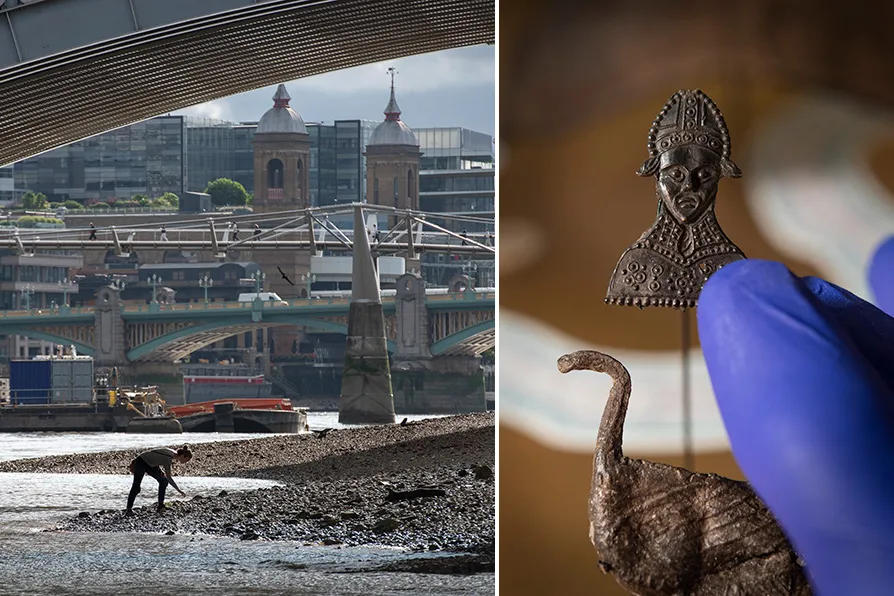JOE GILL speaks to the Palestinian students in Gaza whose testimony is collected in a remarkable anthology
PETER MASON is enthralled by an assembly of objects, ancient and modern, that have lain in the mud of London’s river


Secrets of the Thames
London Museum, Docklands
★★★★
MUDLARKING on London’s river has been around in one way or another for centuries, first as a form of income-gathering among the poor and needy, and now as a hobby for those seeking fascinating bits of history on the Thames’s tidal shores.
This new exhibition — said to be the first major undertaking of its kind — covers a lot of ground in stylish detail, mixing found objects with artistic pieces that reflect the thrill derived from unearthing ancient artefacts in layers of mud.
Beginning in the old days with oil paintings and ink illustrations of ragged souls searching for coal, metal and rope, curator Kate Sumnall gradually swings us round to the modern day, where we get to hear a new generation of bounty hunters talking about their exploits.
Along the way there’s plenty to entertain, including details of a trend in the mid-19th century for mudlarkers to manufacture fake finds for curiosity dealers — foremost among them Billy Smith and Charley Eaton, who made around 12,000 skilfully tarnished forgeries of figurines and medallions, some of which are now as collectible as the real thing.
Just as interesting as the tales of the mudlarkers are the objects themselves, all with their own stories of discovery. There’s a pocket-sized 16th century sundial, the two halves of which were found in the same place by different people eight years apart, and a collection of medals won by the Wimbledon doubles champion Peter Fleming, dumped in the river after they were stolen from his home and discovered several years later.
There are false teeth, false eyes, gold rings, Viking daggers, religious offerings, clay pipes, 10,000-year-old flint axes — and two Iron Age highlights, the magnificent Battersea Shield and the horned Waterloo Helmet, discovered by workers dredging near Waterloo Bridge.
Despite the 350 findings on show, it feels as if only the surface has been scratched, and that more than double that amount would still have been digestable. But we do at least have the bonus of a series of stimulating artistic works that add to the breadth and depth of the exhibition.
Particularly striking is a large installation of the moon by artist Luke Jerram, which emphasises the importance of its tidal pull on the Thames, and a set of three sculptures, Finders Keepers, showing mudlarks with their heads swapped for the significant found objects they have been associated with.
There’s also a mocked-up Thames foreshore that threads throughout parts of the show, with suitable findings embedded within.
At the end, as we move towards the exit door, audio recordings of eight contemporary finders reveal to us their motivations, their best discoveries and what it means to be down by the river looking at the past, providing inspiration for a fresh cohort of young mudlarkers to get out there with their trowels and buckets.
Runs until March 1 2026. For more information see: www.londonmuseum.org.uk.

LOUISE BOURDUA introduces the emotional and narrative religious art of 14th-century Siena that broke with Byzantine formalism and laid the foundations for the Renaissance













